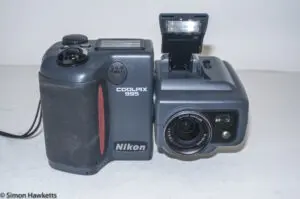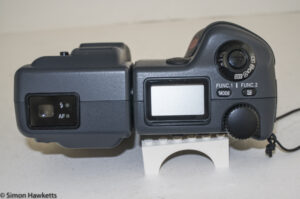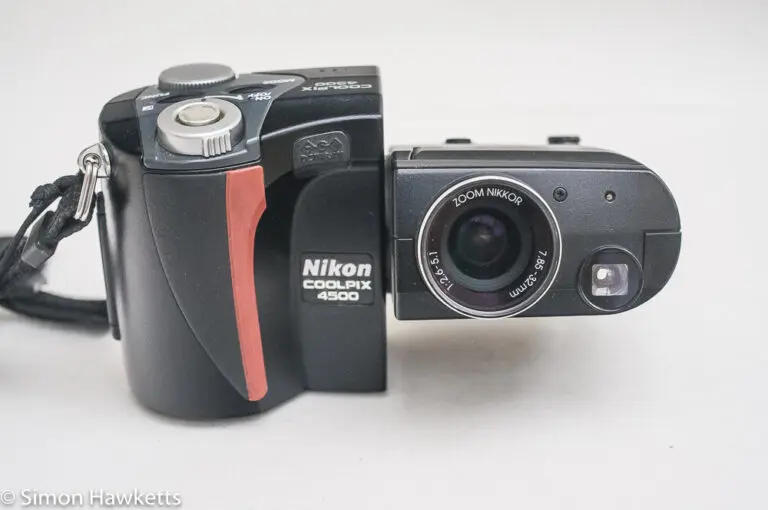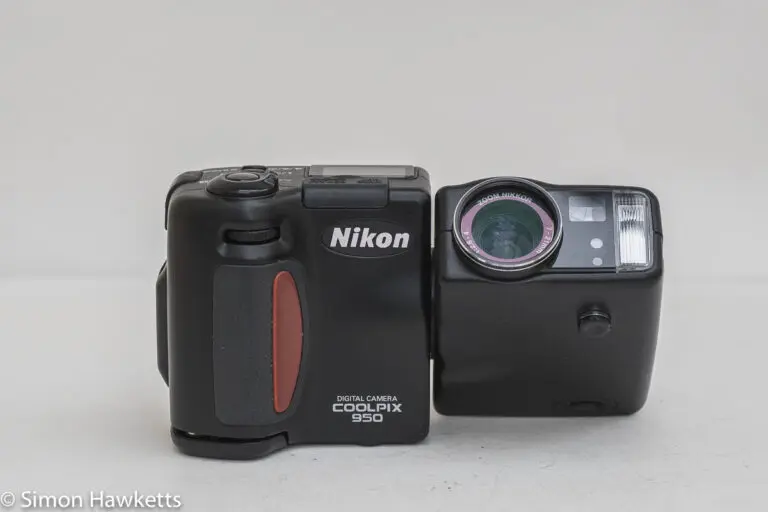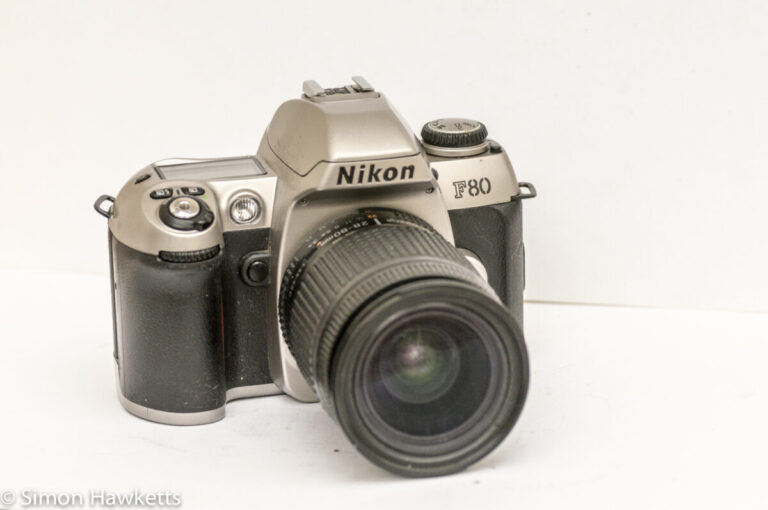Nikon Coolpix 995 digital camera
This is a look at the Nikon Coolpix 995 camera, which was introduced by Nikon in about 2001. It follows the design of other Coolpix cameras in that the optical unit is separate from the display unit, making it possible to hold the body at an angle where the screen is easily seen while the lens is pointing at the subject. In effect, this was an early attempt to solve the problem which is currently solved with an articulating screen.
Nikon Coolpix Images
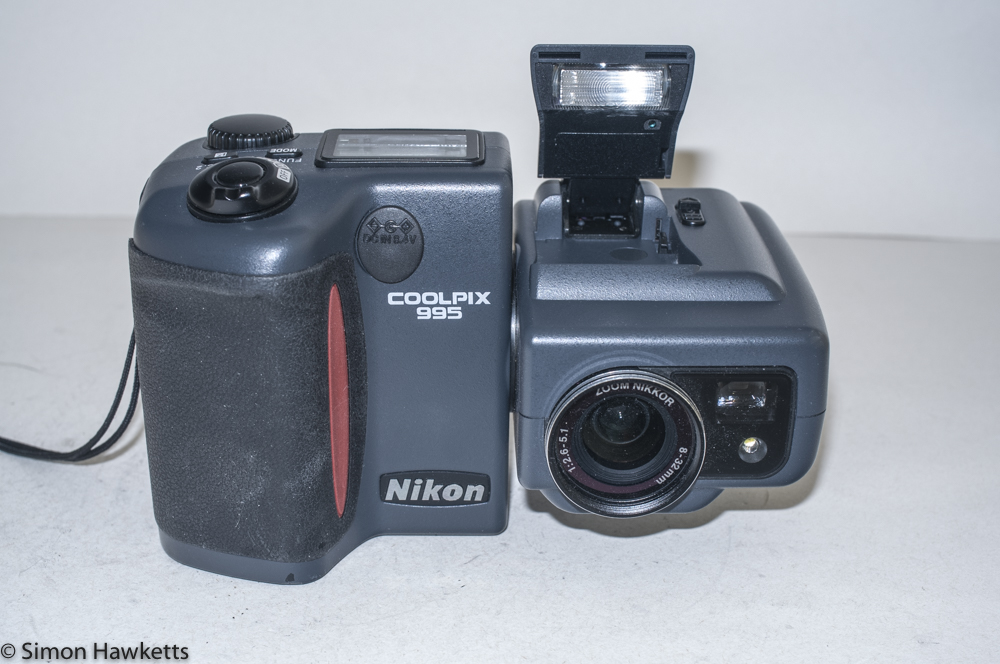
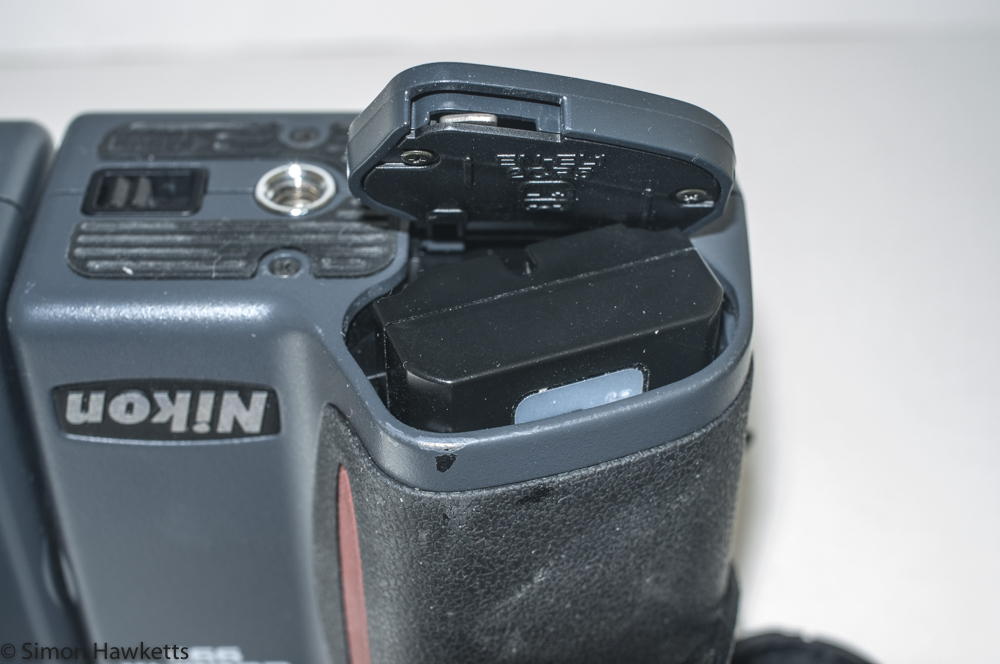

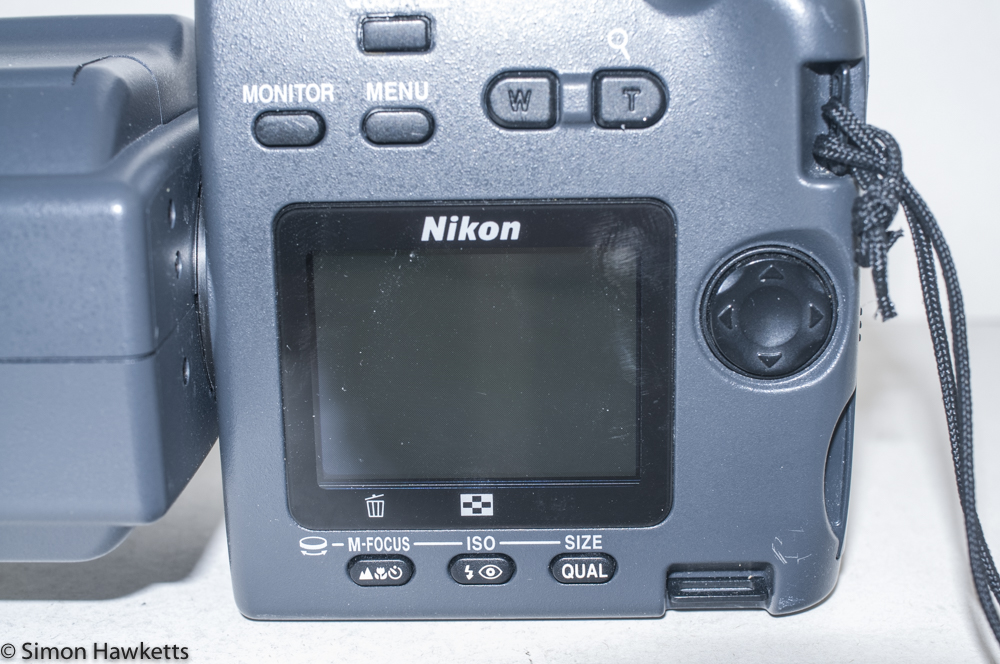
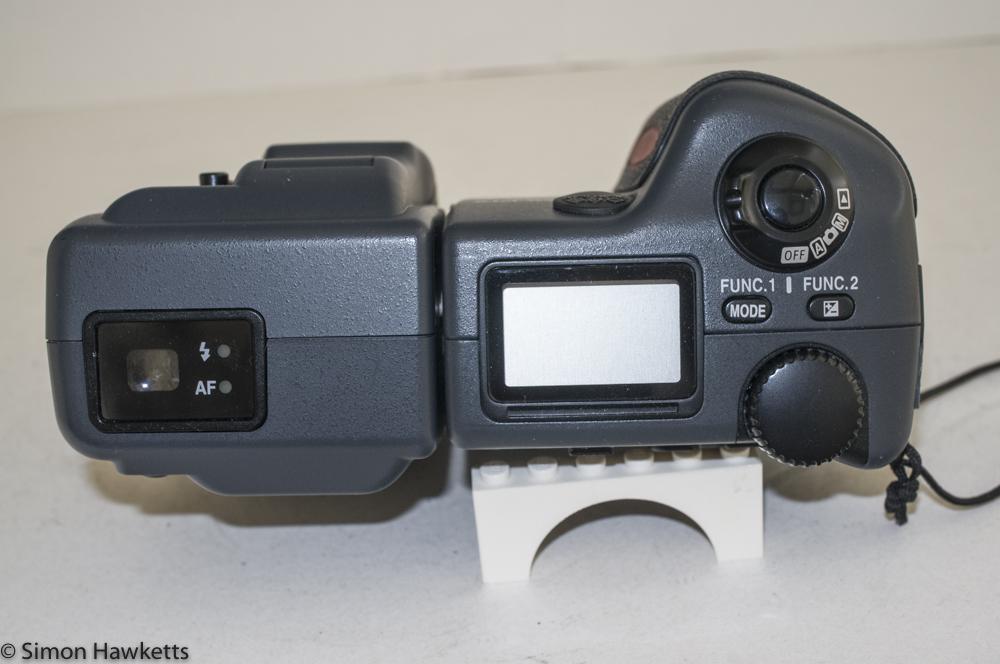
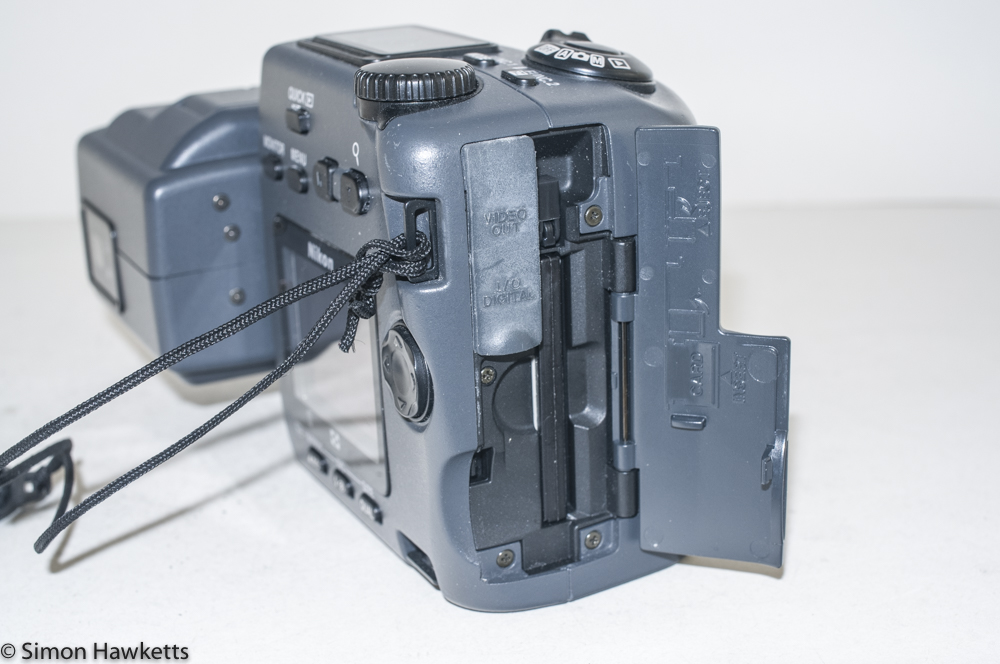
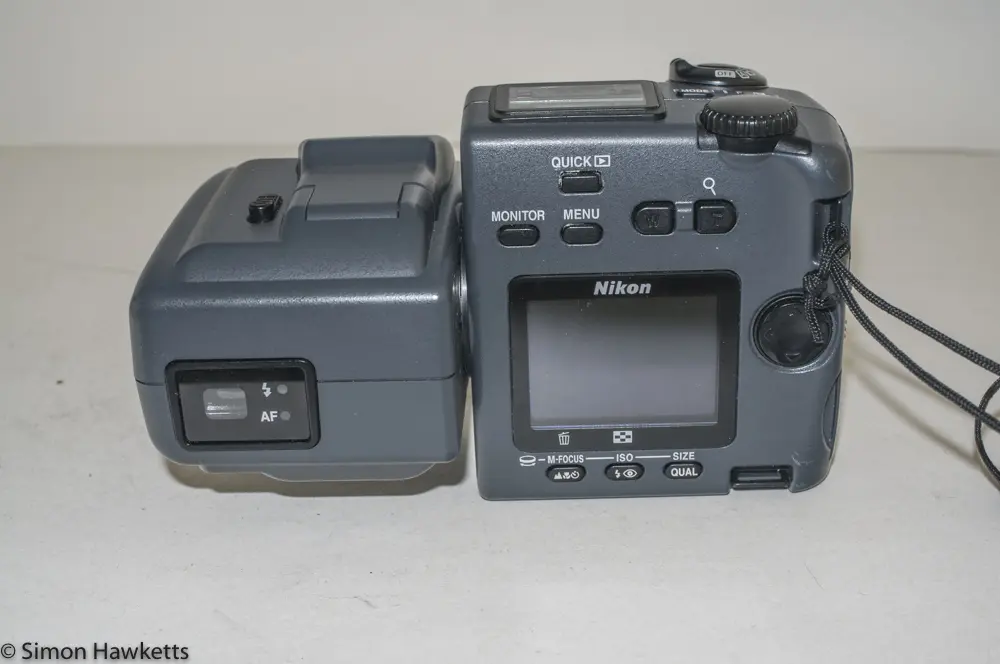
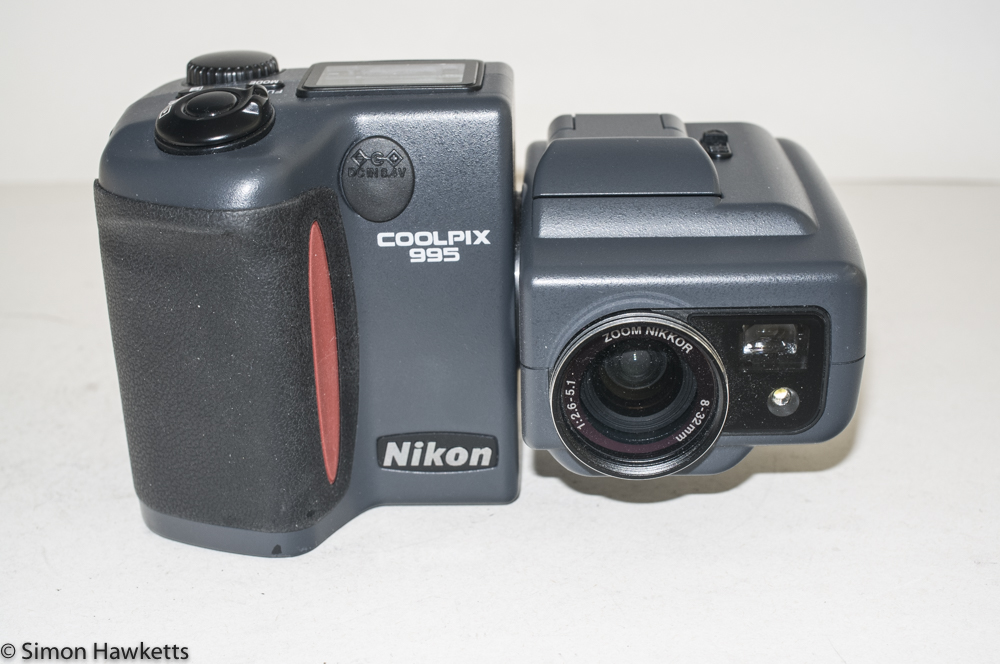
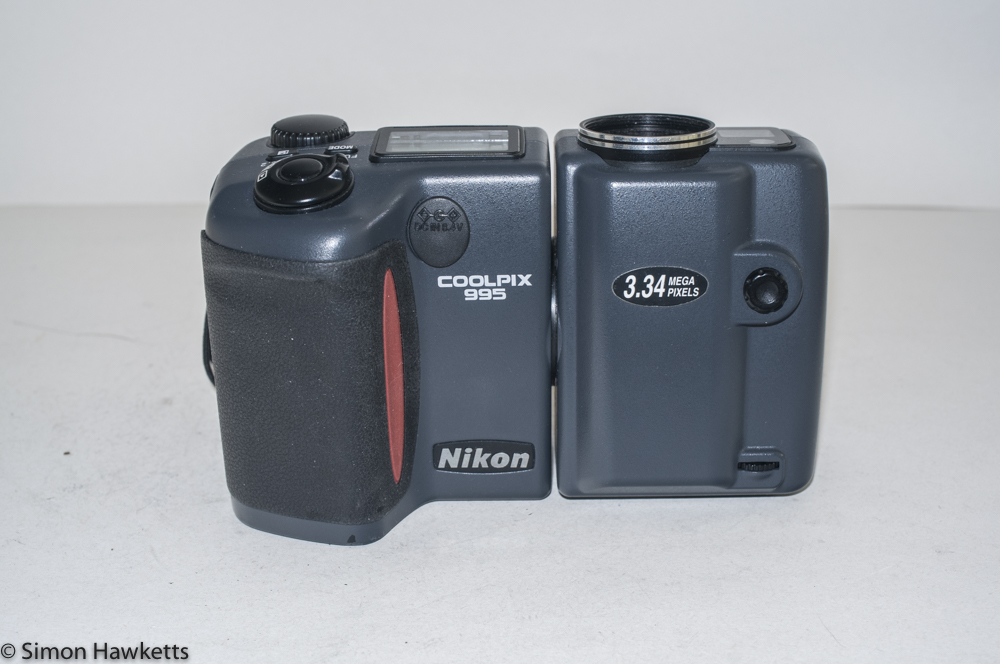
My Nikon Coolpix Camera
I was rather lucky to get this camera as part of a bundle of cameras on eBay UK for only £5 for the whole set. In the group was a Ricoh R1v, an Olympus Camedia C2040 and a couple of other cameras, but the 995 was the unit I actually bought the bundle for.
One of the common problems with these cameras it that one of the doors (either the battery door or the memory card door) will be broken, and since the picture on eBay was quite fuzzy, I didn’t know if this camera would be working or not.
Fortunately, when I received the package with the bundle in I found that it seemed fine; in fact, better than fine since there is hardly a mark on it, and it had a battery fitted, a spare packaged in with it and a 16M Nikon compact flash card fitted as well! Although there was no battery charger, I managed to charge the supplied batteries with my Unipal universal charger.
With the battery charged, and the memory card fitted, the camera seems to work in every way, so the £5 seems quite a bargain with 995 units currently for sale on eBay for up to £99 (for sale that is – not sold!)
Nikon Coolpix Description
The Coolpix 995 follows the same basic design pattern of some earlier and in fact some later cameras, in that the body has a swivel point between the lens unit and the display unit. This makes the camera quite unique, and in my opinion, quite pleasant to use because the body part has a nicely shaped grip that fits the hand well.
Although it is a small sensor camera, which these days would tend to put it in the ‘cheap and cheerful’ bracket, at the time this camera was made it was by no means in that class. There were very few large sensor digital cameras in 2001, and the Coolpix 995 was one of Nikon’s serious models. For a start, it is constructed from magnesium alloy and built to last – a design objective which, 16 years later, I can say they succeeded at. The main design point of the swivel between the main body and the lens unit would, you would think, tend to be a weakness, but it is as solid today as it was when the camera was first made.
Also, in terms of the specification, there is a really good feature set built into this camera. Everything you could want to do the camera would allow, within the constraints of the small sensor – i.e. you won’t get portrait shots with a really out of focus background because it simply isn’t possible with the size of sensor fitted.
One thing the small sensor does excel at however is macro, where the large depth of field is a positive bonus, and In the second part of this look at the Coolpix 995 I will include some macro shots to demonstrate that.
Favourite Features
The handbook for the Coolpix 995 is available on-line, and I’ve linked to it below, so I’m not going to repeat that information here, but I will just describe the features I like most or are most unusual about the camera.
The first thing, which I’ve already mentioned, is the shape and form of this camera. I happen to find the shape of the camera very convenient to use, and the control layout of the main function switch around the shutter button and the lens zoom buttons under the thumb work very well. The swivel design means that it is possible to get some nice shots from low angles whilst holding the LCD for composition and although composition with an LCD is not ideal, there is an optical viewfinder as well.
Nikon are pretty good at adding useful features to their cameras, and the Coolpix 995 is no exception. It’s possible to set the exposure mode to Fully Manual, Aperture Priority, Shutter Priority and Program mode and also dial in up to 2 stops of exposure compensation.
The metering mode and be set to Matrix metering or Centre Weighted and a very useful spot mode where the exposure measuring spot is the focus setting. These settings are in menus, but the menu system is quite easy to navigate and has a very useful personal settings option where up to three sets of setup conditions can be stored for quick recall. Since these are in addition to the first Program mode setting, there are in effect options to set 4 different quick recall stores – one fully auto and three user selectable.
Another quite neat little function is a quick replay which will show the pictures on the storage card in the top left-hand corner of the display. One press of the ‘Quick’ button starts this display and the 4way pad then lets you move through all the images – another press puts you into display mode and leaving the buttons alone for a few seconds drops you back into picture taking mode.
On the bottom of the unit, there is a switch which limits the rotation of the lens unit in relation to the display unit. With this enabled, the lens is limited to a 180° shift from straight forward to straight back.
All in all, this is a seriously good camera and for anyone who didn’t need the performance of a large sensor unit should give very good results. In the next part of this look at the Coolpix 995 I’ll show some sample pictures to see how good that is.
Nikon Coolpix 995 Specifications
- Nikon Coolpix 995 swivel design compact bridge camera
- Small format (1/1.8) 3.34 Mp sensor
- Shutter speeds 1/2000 to 8sec + bulb
- Zoom Range 4x covering 35mm equiv. of 38mm to 152mm
- Aperture f/2.6 to f/5.1 max dependent on focal length selected
- Autofocus with selectable focus point and auto selection, continuous or single
- Macro focus to 0.8inch
- Matrix metering with 256 area sensor.
- Centre-weighted, average and spot metering available
- Exposure compensation of +/- 2 stops
- Program, Shutter priority, Aperture Priority and full Manual exposure modes
- Exposure bracketing
- Auto white balance and 7 presets
- 3 User memory slots which store most camera settings for quick recall.
- Auto ISO up to 800p
- Flash built into lens unit
- Flash sync socket
- Diopter adjustment on optical viewfinder
- 1.8 inch LCD + optical viewfinder
- Top panel shooting info LCD
- Compact Flash storage
- Lithium-Ion rechargeable battery
- Manual available on-line here
Discover more from Everything Vintage
Subscribe to get the latest posts sent to your email.

